If you are thinking about using herbs ornamentally by planting varieties that are particularly pretty, then rosemary, lavender, and thyme are obvious choices. We, however, have always had a deep appreciation for chives.
Pollinators – bees, in particular – love their splendid white, lavender, pink, or purple flowers. In fact, this perennial herb can turn any garden into a magazine cover when their blossoms appear as cheerful spheres above delicate clusters of foliage.
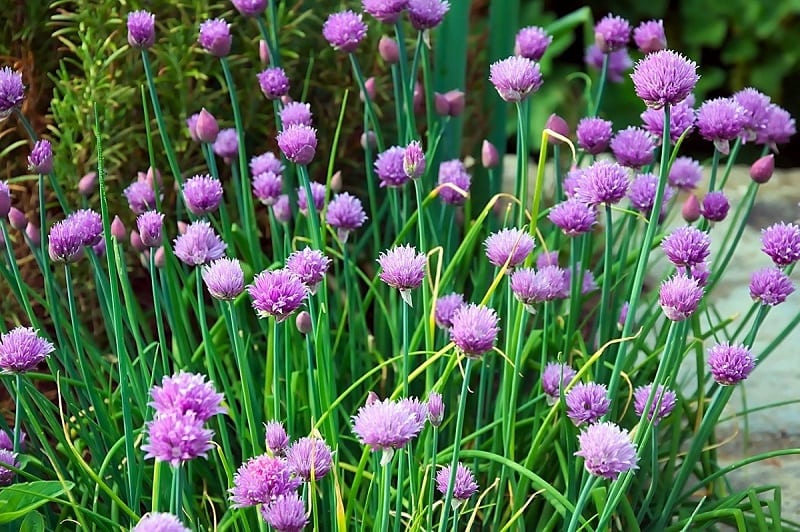
Growing Chives is Easy
Contents
Chive leaves look like slender green tubes. The experienced gardener and cook snips and gathers them as a garnish. If you pick apart the flower heads, the individual florets brighten the sight and taste of a salad.
The herb is easy to grow. Here’s how.
Getting Started
First, of course, is that you need to get your hands on some chives. They are easy to divide, so ask fellow gardeners if they have any to share. Of course, stopping at your local nursery and picking up a small clump should be just as easy.
You can direct sow seeds, too, as soon as the soil is workable. If so, keep in mind that you may not experience much of a harvest or bloom until the following year.
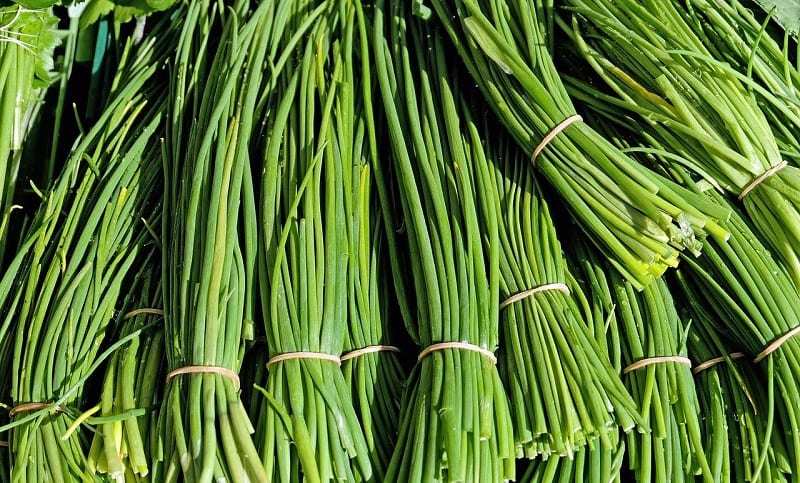
Planting Chives
Pick a location that receives full sun. Chives grow best with at least 6 hours of direct sunlight each day. Don’t hesitate to settle for partial sun, however, if lavish sunlight isn’t an option.
Chives flourish in fertile, well-draining soil. To promote vigorous growth throughout the season, work organic compost into the soil at the time of planting. You can also apply about 2 to 3 tablespoons of all-purpose fertilizer per square foot of planting area.
Plant the seeds about ¼ inch deep into the soil. Your final plant spacing should be 4 to 6 inches apart in all directions. This will work well for a formal edge or spacing, says the Old Farmer’s Alamanac.
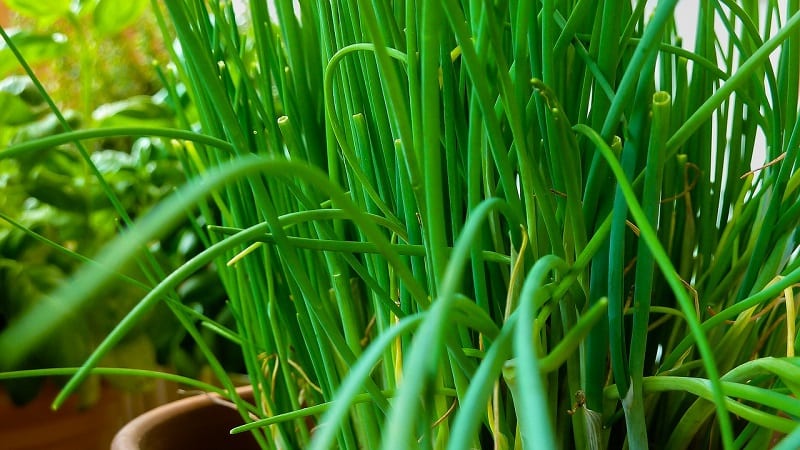
Caring for Chives
Chives require consistent watering. Moisten the soil thoroughly when watering. You can also use a mulch to conserve moisture and keep the weeds at bay.
Minimal care is needed for fully-grown chive plants. After the flowers bloom, be sure to remove them if you don’t want the seeds to spread throughout your garden.
Dividing Chives
Chive plants grow to be 12 to 24 inches tall and may spread a foot across. Remember to divide the plants every 3 to 4 years in the spring. Chives are more productive when they are divided regularly.
To divide plants, water them ahead of time. After watering, cut the leaves back to just a few inches above the ground.
Use a pitchfork to dig up the plant then lightly tap the root on the ground until it breaks up a bit. You can then pull the roots apart into smaller clumps. Don’t worry too much about damaging the roots. Chives are a tough, hardy herb.
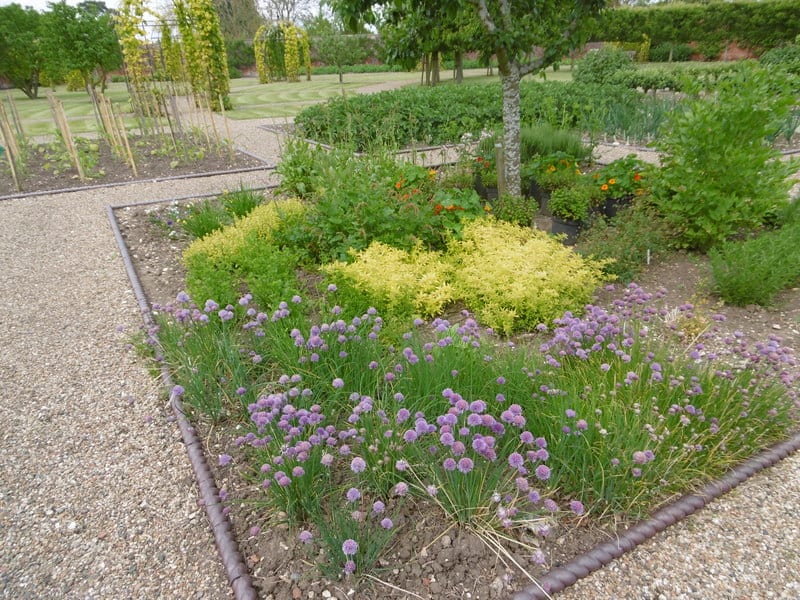
Growing Chives in a Container
If you plan to grow chives in a container, use potting soil to ensure better drainage. We recommend that you add compost to the mix. If you do want to use compost, add some sand and peat or coconut coir to allow for more oxygen and better drainage.
Plants in containers typically dry out faster. This means you will likely need to water your container-grown chives more frequently.

Harvesting Chives
If you’re growing chives for the kitchen, consider cutting the flower buds off before they bloom. This will encourage more vigorous growth. You should harvest leaves in the early morning – before the heat from the sun dehydrates the leaves.
To harvest, wrap your hand around a clump of leaves and cut with a pair of clean, sharp scissors or a knife. Make the cut a couple of inches above the soil line. Be sure to leave some green at the base of the plant to permit better regeneration.
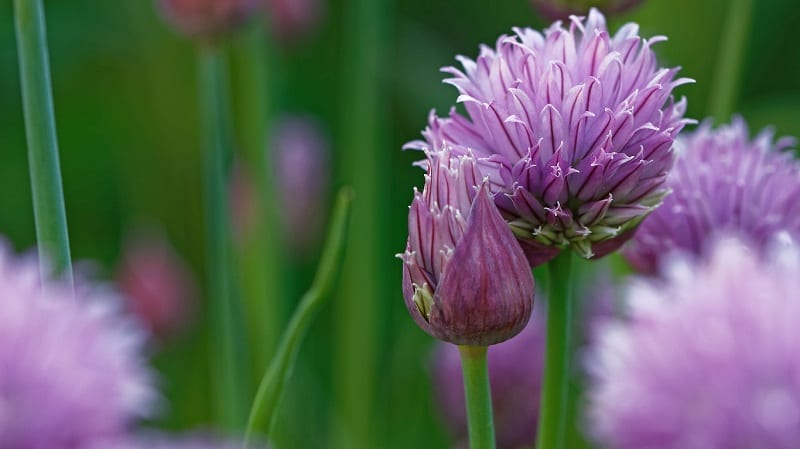
An All-Around Garden Favorite
Chives offer beauty, food, and pest-repellent properties, so what’s stopping you from adding this herb to your garden?
Don’t forget to put some in a container near the kitchen. You can grow chives in a container on a sunny kitchen windowsill for easy access.
Do you grow already grow chives? Do you grow them for decorative or culinary purposes?
Both, maybe? Please do tell us about your experiences. We’d love to hear about them.
Here’s a quick video…








